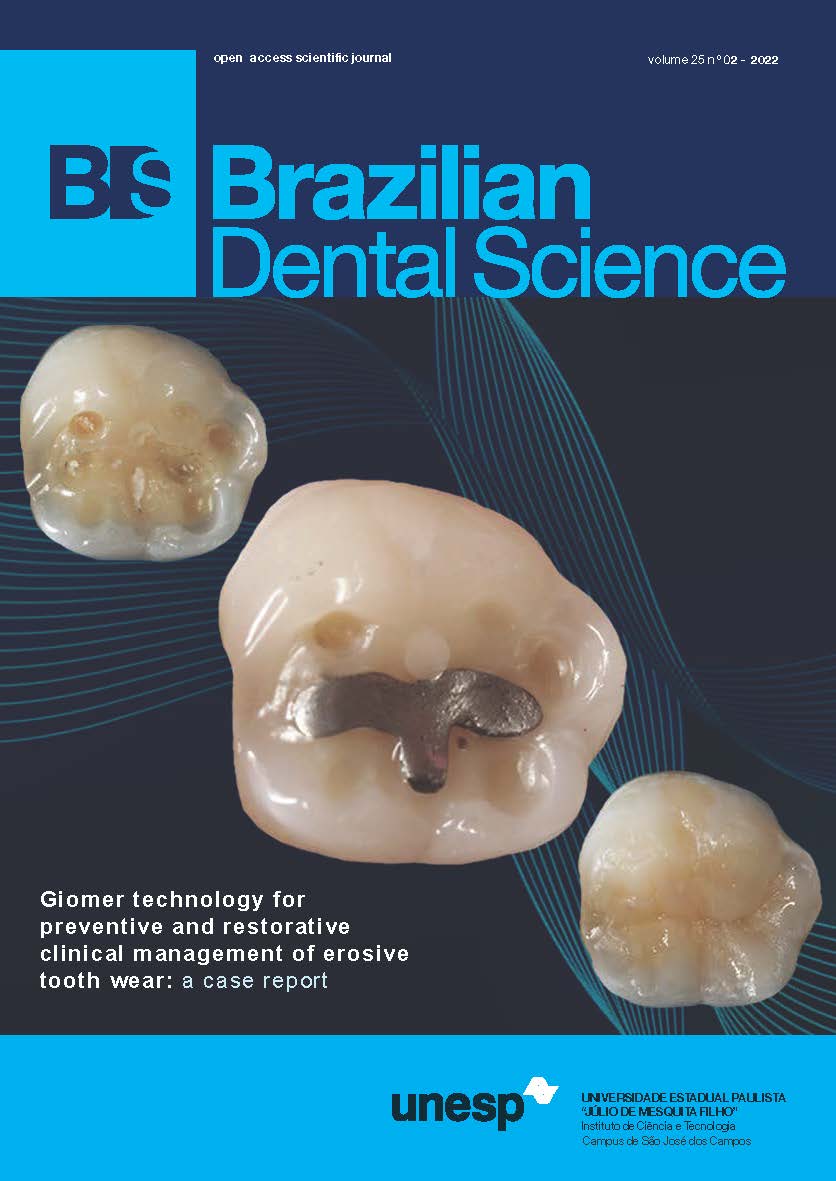Caries progression and need for reintervention on occlusal ICDAS 4 lesions after different treatments: a retrospective university-based study
DOI:
https://doi.org/10.4322/bds.2022.e3125Abstract
Objective: To assess the caries progression and the need for reintervention on occlusal ICDAS 4 lesions after
different treatments. Material and Methods: The sample consisted of records of children treated in a public setting
who had at least an occlusal ICDAS 4 lesion in primary and/or permanent molars. The radiographic images of
ICDAS 4 lesions at the first and last appointments were classified as absence of radiolucency, radiolucent image
at the enamel–dentin junction, at the outer half or inner of the dentin. The need for retreatment after different
treatments (non-invasive - topical fluoride applications, oral hygiene instructions and dietary guidance, microinvasive
- resin-based sealant, or invasive - restoration) was assessed by reviewing clinical and radiographic
records. The need for retreatment was defined as any complication requiring mending (e.g., caries progression,
total loss of sealant, or restoration failure). The Poisson regression model was used to investigate the association
between individual and tooth-related variables and the outcome. Results: Among the 111 lesions in 81 patients,
most (73.0%) lesions were in primary molars. Most lesions (52.3%) did not exhibit radiolucency, whereas 29.7%
had radiolucency at the outer half of the dentin. The mean follow-up was 18.8 ± 6.5 months. After follow-up,
82.9% of the lesions did not require retreatment. The prevalence of ICDAS 4 lesions that did not need retreatment
was higher among lesions with radiolucency at dentin (p=0.01). Conclusion: Most occlusal ICDAS 4 lesions did
not require reintervention, especially those exhibiting radiolucency in the outer half of the dentin.
KEYWORDS
Dental caries; Clinical decision-making; Dental radiography.
Downloads
Downloads
Published
How to Cite
Issue
Section
License
Brazilian Dental Science uses the Creative Commons (CC-BY 4.0) license, thus preserving the integrity of articles in an open access environment. The journal allows the author to retain publishing rights without restrictions.
=================




























